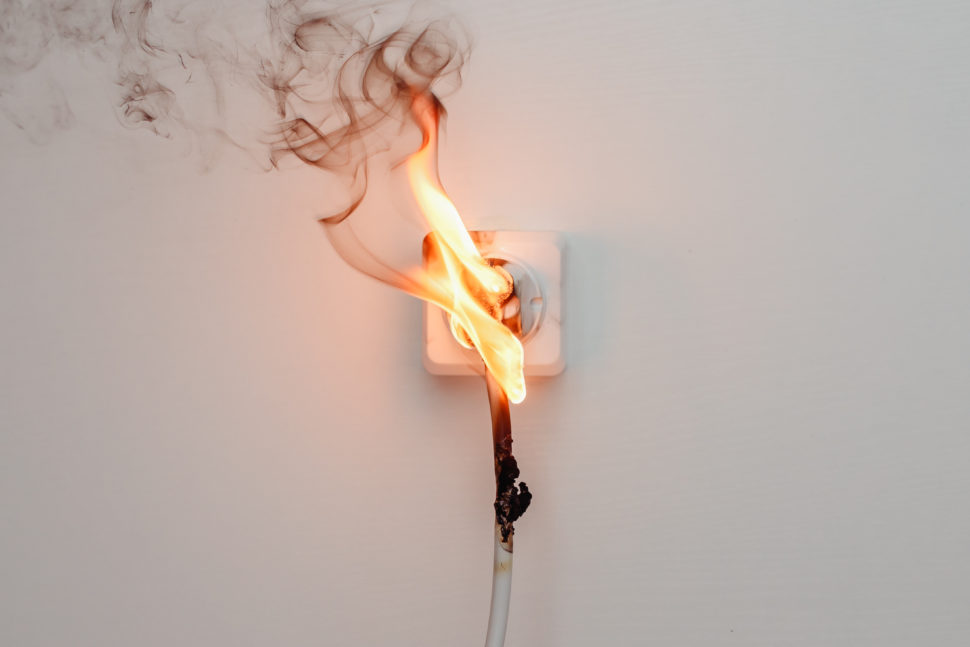What Is a Power Surge?
Filed under: Electrical, Safety Tips
Comments: None

Today’s world is extremely reliant on electrically powered devices, so when a power surge strikes, it can become a major hassle. Not only can a power surge damage your electronics, but it could also be potentially dangerous. Surge protection is a sound investment that will protect your electronic equipment as well as you. The experts at North Central Electric are sharing what causes a power surge and why surge protection is important.
What Causes a Power Surge?
A power surge occurs when the flow of electricity into your home is interrupted, then started again. They can be internal or external and result from lightning strikes, faulty wires, or the use of high-powered electrical devices. Power flowing through a typical wall outlet is around 120 volts, but it’s not constant and can fluctuate between 0 and 169 volts. When a damaging power surge happens, the voltage exceeds 169 volts. This type of surge can damage electronics in your home and in some cases, permanently disable them. To prevent a power disruption, knowing the signs of a power surge can help keep you and your home safe.
Signs of a Power Surge
There are a few tell-tale signs of a power surge that your appliances or devices will display including:
- The device’s clock or lights will flash
- The device is powered off, suddenly resets, or isn’t working at all
- There is a burnt odor around the device or power source
- The circuit breaker trips often
While you can’t fully protect your home from an external power surge, you can take steps to protect what’s on the inside. Your first line of defense should be prevention. If your devices indicate any of the above signs, you can try:
- Unplugging devices that aren’t being used. Unplug devices like your toaster, power tools, or other small appliances that do not need to be plugged in all day.
- Upgrading faulty wiring. If you have an older home built before the 1980s, chances are that’s why you’re experiencing surges. Electrical systems that old weren’t designed to handle large loads of power. If you have lights that flicker or dim when another appliance turns on, this is a sign of faulty wiring. It’s important to not ignore these signs, as faulty wiring can cause a house fire.
- Fixing overloaded circuits. If your home is newer, you might experience an overloaded circuit. If your refrigerator and oven are both drawing power from the same circuit, this can put stress on the circuit. Ask your electrician to install a dedicated circuit for each large appliance.
How to Prevent a Power Surge
The bad news is you can’t completely prevent a power surge from happening, especially an external one. The best thing you can do to protect your electrical equipment and your home is to purchase a quality surge protector, also known as a surge suppressor or surge diverter. A surge protector works by diverting dangerous voltage spikes safely to the ground, rather than to a circuit. You can also invest in quality safety switches to further protect your electrical devices.
At NCE, we are here for you. From extending the life of your equipment with user acceptance testing to providing predictive and preventative maintenance programs to predict electrical equipment failures before they happen, our team of experts has been helping customers install and maintain a reliable electric power system since 1988. Contact us today and let’s get to work.
